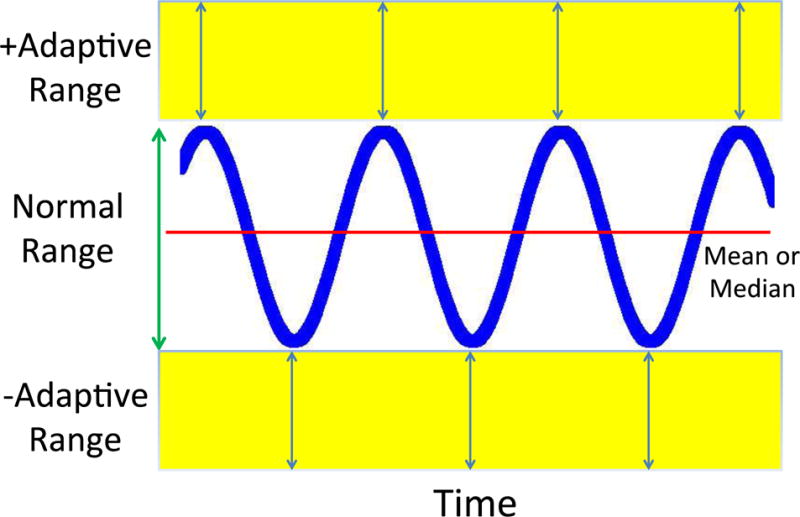Fig. 4.

A Graphic Representation of Adaptive Homeostasis. Here, in addition to the normal or physiological range, are added both positive and negative adaptive ranges that can be transiently induced via signal transduction pathways in response to sub-toxic, non-damaging, stimuli. Thus, for example, a signal given by nanomolar levels of H2O2 can act via the Keep1-Nrf2 system to increase synthesis of protective levels of proteasome, immunoproteasome, and Pa28 (or 11S) proteasome regulator for a period of several hours (34–36): an example of positive Adaptive Homeostasis. Loss of the H2O2 stimulus then returns the system to the basal homeostatic range. Similarly, when organisms are exposed to a diet rich in amino acids, they turn off production of amino acid synthetases, thus decreasing capacity to synthesize amino acids: an example of Negative Homeostasis. Restoration of a ‘normal’ diet would then reverse the transient decrease in capacity back within the normal homeostatic range.
